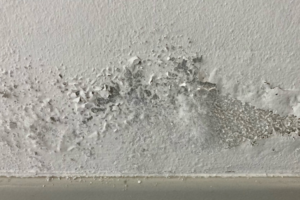When people think of mold, they usually picture those blotchy, fuzzy stains creeping along the bathroom ceiling or hiding behind a forgotten cardboard box in the basement. But while homeowners scramble for bleach and elbow grease to treat what they see, the real culprit continues to work silently in the background. High indoor humidity is like handing mold a VIP pass to your entire house. If you’re not managing the moisture in the air, you’re practically inviting mold to throw a never-ending party in your drywall.
This article is going to break down how humidity control is a lot more than just comfort. It’s your first line of defense against a host of indoor problems, especially mold. If your home smells musty or your allergies won’t quit, it’s time to take a look at the moisture content in your air. That fog on your windows isn’t just annoying—it’s a warning.
Why indoor air moisture matters
Humidity might be invisible, but it’s far from harmless. Moisture in the air acts like fuel for mold. All it takes is a surface with the right temperature and trapped moisture, and boom—mold spores start multiplying like bad decisions at 2am. Most molds love humidity levels above 60 percent, and if you’ve ever walked into a muggy room, you’ve probably felt how fast things can get out of control.
Problem is, you don’t need a flood or a burst pipe for mold to grow. Daily life provides more than enough moisture—showers, cooking, laundry, and even breathing can add up. If your home isn’t ventilated right or your HVAC is slacking off, you’ve basically set up a four-star resort for humidity to hang out and mold to move in.
What’s the ideal humidity range
Let’s not overcomplicate this one. You want your indoor humidity hovering between 30 and 50 percent. This sweet spot is dry enough to keep mold from getting cozy but not so dry that your skin peels off every winter. Once you creep above that 50 percent line, things get sketchy—condensation pops up, dust mites prosper, and mold looks at your living room like it’s an investment opportunity.
You don’t have to be a meteorologist to figure this stuff out. A humble hygrometer can tell you the humidity level in any room of your house. You can pick one up online or at a hardware store for about the same cost as a pizza, and let’s be real, pizza isn’t fixing your mold issue.
How mold forms without standing water
If you’re only checking under sinks or mopping up spills thinking that’s enough to prevent mold, you’re missing the bigger picture. Mold spores are everywhere, just waiting for the right cocktail of moisture, temperature, and dead skin cells to get started. Yeah, dead skin cells—because once again, humans are messy.
Humidity lets mold grow in places you wouldn’t expect. Think inside your walls, under carpets, or in HVAC ducts. If humidity lingers long enough, porous materials like drywall, insulation, and wood become mold magnets. You can’t always see mold from the outside, but your lungs will notice. Poor indoor air quality from mold can mean coughing, sneezing, headaches, and in some cases, bigger health issues.
Common sources of excess humidity
Let’s talk about how your house might be sabotaging itself. Bathrooms are an obvious one. Steamy showers without a fan running? That’s mold’s favorite spa day. Then there’s cooking. Boiling pasta or simmering soup without a vent hood? You just gave your kitchen a humidity facial.
But it doesn’t stop there. Basements tend to collect moisture like it’s their full-time job. Improper grading around the foundation, clogged gutters, and poor drainage all contribute. Even storing too much stuff in one area can block air flow and create small pockets of humid air. Think of clutter like little humidity breeding grounds, just waiting to blow up into full-on mold hotspots.
The link between humidity and indoor air quality
It’s not just about mold. Indoor air quality tanks when humidity’s out of balance. That sticky feeling in summer? That’s your air holding too much water. It traps allergens, dust, and even bacteria, making your space feel oppressive and triggering respiratory issues. Dry air isn’t exactly your friend either—it irritates skin, cracks lips, and helps viruses float around more easily.
The trick is maintaining that middle ground where your home breathes comfortably. Healthy humidity levels help HVAC systems run more efficiently and reduce airborne particles. You’ll feel it in your lungs and your energy bill. You might even stop blaming your cat for that constant tickle in your throat.
Mold doesn’t care about season changes
Some people think mold is only a concern in the summer. Not quite. Winter can be just as tricky. You seal up windows, turn on the heat, and forget that all the moisture you’re adding by living your life has nowhere to go. Pop quiz—what happens when moist air meets cold windows or exterior walls? Condensation. And behind that condensation? A breeding ground.
Even in freezing temperatures, if your insulation is sloppy or you’ve got thermal bridges (fancy term for parts of your house that let heat escape), you’ll get cold spots that attract condensation. Mold isn’t hibernating, it’s just moving into the north-facing bedroom for the season.
Signs your humidity is too high
You don’t need lab equipment to figure this out. Fogged-up windows, musty odors, clammy furniture or walls—they’re all whispering that humidity is overstaying its welcome. If your towels stay damp forever or your bread molds before the sell-by date, don’t blame your toaster. Blame your air.
Dust mites also throw a house party in high humidity. You can’t see them, but you’ll feel them if you’ve got allergies. Then there’s mold, which sometimes clues you in by discoloring walls, ceilings, or furniture. If paint is peeling or you see dark spots creeping along baseboards, it’s already gone too far.
How to control humidity in your home
If your home is a swamp, fix the source—not just the symptoms. Start by ventilating. Use exhaust fans every time you cook or shower. Open windows when weather allows. Run a dehumidifier in damp rooms like basements, laundry areas, and certain bedrooms. Set it and forget it, but check it regularly so you’re not running an empty reservoir and wondering why nothing’s changing.
Seal up air leaks. Windows, doors, and crawlspaces tend to leak like loose lips in small-town gossip. Add weather-stripping or insulation where needed. Make sure your HVAC isn’t acting lazy—regular maintenance keeps it running efficiently and helps pull excess moisture out of the air.
If you have a newer thermostat, some come with humidity sensors and automation. Let tech work for you, because swatting flies all summer isn’t your main goal in life. Set your HVAC system to balance both temperature and humidity settings. Keep air moving with fans or system-powered duct circulation. Stagnant air is moisture’s best friend.
When to call for help
If you’re constantly wiping down surfaces or battling recurring mold patches, it’s time to bring in someone who deals with this mess for a living. Restoration professionals can use moisture meters, thermal imaging cameras, and years of dealing with everything from backed-up basements to attic disasters. What you think is a surface stain could be just the tip of a very ugly iceberg.
Some infestations require demo and professional drying to fully get rid of the problem. Trying to handle deep mold on your own often spreads the spores around or misses the root cause entirely. And let’s be honest, half the DIY mold remedies on the internet just mask the smell and make things worse later.
If there’s ever a situation where paying to fix something is cheaper than the damage it can do later, this is it. Mold compromises materials over time, eats through drywall and wood, and reduces the resale value of your home faster than a busted septic tank disclosure.
Staying ahead of the mold game
You don’t need to sterilize your house like a cleanroom, but consistent humidity control is non-negotiable. Check your levels weekly. Use dehumidifiers where needed. Open vents, fix leaks fast, and don’t skimp on HVAC maintenance. Think of it like brushing your teeth—annoying sometimes, but avoiding the dentist is a gamble you’ll lose eventually. Same with mold.
Think of managing indoor air quality the same way you think of cleaning your kitchen. Don’t wait for mold to show up like a surprise guest. Keep an eye on your humidity and most of the other problems will fall in line. No one wants fungi taking up real estate in their walls. Control moisture, live better. It’s that simple.







